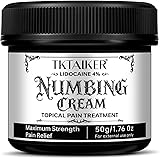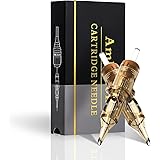The world of professional tattooing demands precision, reliability, and an intimate understanding of the tools at an artist’s disposal. For many dedicated tattoo artists, the choice of a tattoo machine is not merely a preference but a critical factor influencing the quality, speed, and comfort of their work. Just as a sculptor carefully selects their chisel, or a painter their brush, a tattoo artist must find the rotary machine that perfectly complements their technique and artistic vision. The video above offers a firsthand look into the performance nuances of three distinct tattoo machines, comparing their capabilities for both linework and shading.
This detailed comparison evaluates the Bishop Wand Packer, the Mast Flex, and the Mast Rider Pro, highlighting their individual strengths and characteristics. Understanding these distinctions is paramount for any artist looking to refine their setup or invest in new equipment. Let’s delve deeper into what makes each of these tattoo machines a potential asset in your professional arsenal, building upon the practical insights shared in the video.
The Art of Linework: Precision in Motion
Achieving crisp, consistent lines is often considered the foundation of a great tattoo. The video’s speaker astutely points out that the Bishop Wand Packer excels in this regard, praising its balance. A well-balanced tattoo machine, much like a perfectly weighted pen, allows an artist to maintain control and reduce hand fatigue over long sessions. This balance translates directly into the ability to pull smooth, unwavering lines, whether you’re outlining a delicate floral design or laying down bold, traditional contours.
In contrast, the Mast Flex is noted for its “lower RPM” feel when executing linework. This observation is crucial. A lower RPM (revolutions per minute) motor can provide a softer hit, which some artists prefer for certain types of delicate linework or for working on sensitive skin areas. It can feel less aggressive, allowing for a more deliberate, controlled pace. However, this characteristic might also necessitate a slightly different technique to achieve the desired saturation and crispness, requiring the artist to potentially adjust their hand speed or needle depth. It’s akin to driving a car with a sensitive clutch; mastery comes with understanding its unique response.
The Mast Rider Pro also receives commendation for its linework capabilities, indicating it holds its own against the others. This suggests a versatile performance profile, making it a strong contender for artists who need a machine that can handle various tasks without significant compromise. The ability of a tattoo machine to adapt to different line weights and styles is invaluable, much like a multi-tool that performs several functions reliably.
Mastering the Shade: Blending and Saturation
Beyond linework, the true artistry often shines in the shading. The video emphasizes the importance of smooth, even consistency when laying down ink for gradients and fills. This is where the Mast Flex encountered some difficulty, with the speaker noting it was “a bit difficult to get smoother or even consistency.” This feedback points to a potential challenge in achieving soft blends or dense, even saturation, which are critical for realism, portraits, and smooth color packing.
Several factors can contribute to inconsistent shading. A motor’s inherent characteristics, the stroke length of the machine, and even its vibration pattern can all play a role. If a machine struggles with consistency, an artist might find themselves going over areas multiple times, leading to unnecessary skin trauma, or struggling to achieve the seamless transitions that define high-quality shading. It’s like trying to paint a gradient with a brush that constantly skips; the effort increases, and the desired outcome becomes harder to achieve.
Conversely, both the Bishop Wand Packer and the Mast Rider Pro “felt fairly comparable” for shading, indicating a more reliable and consistent performance in this critical aspect. For artists who frequently work on pieces requiring intricate shading, portraits, or smooth color blends, the consistency offered by these machines would be a significant advantage. This consistency reduces the learning curve and allows the artist to focus more on the art itself rather than fighting the machine’s eccentricities.
Machine Balance and Ergonomics: The Unsung Heroes
While linework and shading performance are paramount, the overall user experience is profoundly influenced by a tattoo machine’s balance and ergonomics. The Bishop Wand Packer’s praise for being “very well balanced” is a testament to thoughtful design. A balanced machine minimizes strain on the wrist and hand, allowing for longer, more comfortable tattooing sessions. This is not a trivial detail; repetitive strain injuries are a real concern for tattoo artists, and a well-designed machine can mitigate these risks. Imagine writing for hours with a pen that feels off-kilter; even the best penmanship would suffer.
Furthermore, the “feedback” from each machine, as mentioned in the video, is a subjective but vital metric. This feedback encompasses how the machine vibrates, how it feels as the needle penetrates the skin, and how it responds to changes in voltage or hand pressure. Some artists prefer a strong, tactile feedback, while others prefer a smoother, quieter operation. The significant difference in feedback between the machines, despite similar results, underscores the personal nature of machine preference. It’s like choosing between two high-performance sports cars; both might get you to the destination quickly, but the driving experience – the feel of the road, the engine’s purr – will be distinctly different.
Maximizing Your Investment in Tattoo Machines
Investing in high-quality tattoo machines is a commitment to your craft. Each machine brings its own set of characteristics that may align perfectly with certain styles or techniques. For instance, an artist specializing in fine-line black and grey might prioritize a machine known for exquisite balance and consistent output, much like a calligrapher might seek a specific fountain pen. Conversely, a color realism artist might lean towards machines that offer superior shading consistency and power for dense pigment packing.
The practical demonstration in the video, where the artist maintains the “same voltage” across machines for shading, highlights a key variable in machine testing. Voltage directly impacts needle speed and force, and observing how different machines react at a consistent power setting provides valuable comparative data. It reveals the inherent efficiency and motor characteristics of each device. Consequently, understanding these individual quirks allows artists to fine-tune their power supplies and techniques to extract the best performance from their chosen tattoo machine.
The Role of Rotary Tattoo Machines in Modern Tattooing
The machines discussed—the Bishop Wand Packer, Mast Flex, and Mast Rider Pro—are all examples of modern rotary tattoo machines. Rotary machines have largely supplanted traditional coil machines for many artists due to their lighter weight, quieter operation, and reduced vibration. Their consistent, direct drive system is often credited with making them easier to use for prolonged periods and reducing skin trauma. The evolution of tattoo machine technology continues to push the boundaries of what is possible, offering artists tools that are more ergonomic, versatile, and precise than ever before.
Ultimately, the “best” tattoo machine is subjective, contingent upon an individual artist’s style, preferences, and the specific demands of their work. A review like the one provided in the video, supplemented by this deeper dive, serves as an invaluable resource. It empowers artists to make informed decisions, ensuring their investment in tattoo machines truly elevates their art and enhances their professional practice. Remember, when considering any Mast machines, the promo code Qinks10 offers a 10% discount, making these advanced tattoo machines more accessible.











